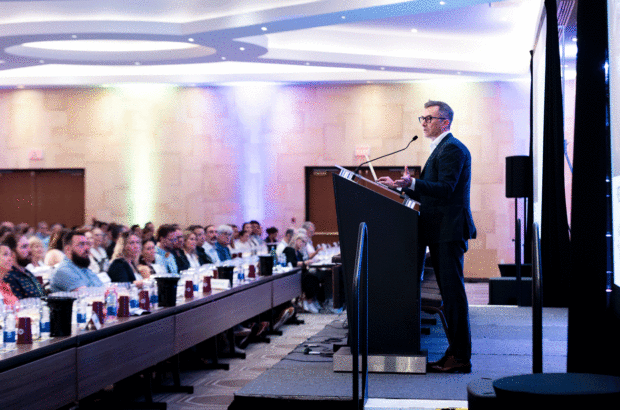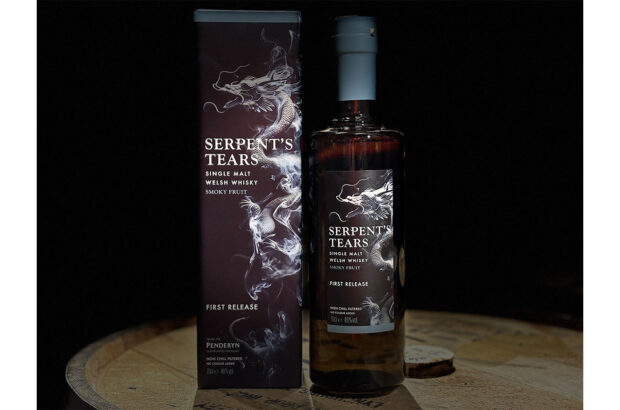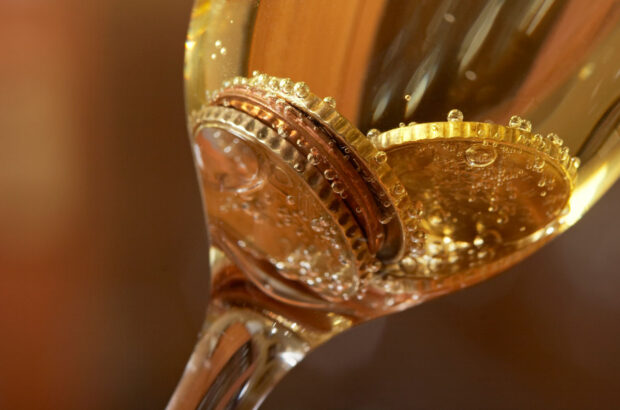John Salvi MW explain the conditions for the Bordeaux 2015 vintage...
‘There was no need for extraction this year – it was pure infusion’ – Château Figeac
‘2015 was the hottest year on record worldwide, even if not in Bordeaux, and brought peace and serenity to the winemakers’ – Château Haut Bailly
Bordeaux 2015 weather: At a glance

Rainfall and sun hours in the Bordeaux 2015 growing season.

Bordeaux 2015 temperature chart.
The year in-depth:
Winter 2014–15 (December, January, February. (Rain 227.2mm. Sun 262.7 hours)
Overall temperatures were close to the long term average. There was no frost or other damage and the vine went into Spring raring to go. Lots of rain filled the water table to overflowing.
March (Rain 38mm. Sun 107.1 hours)
March was dryer than usual, but also gloomier, more cloud covered and colder. This somewhat delayed bud-break until 9th – 10th April.
April (Rain 26.9mm. Sun 197.1 hours)
A fine month and the vine caught up nearly all its delay. Growth was rapid. It was the 4th warmest April for the last 65 years. The middle of the month temperatures even touched 28°C. Sunshine was generous and very little rain fell. Bud-break, although late, was even and very regular.
May (Rain 33.5mm. Sun 201.7 hours)
The vine grew regularly at a fast rate. Flowering arrived towards the end of the month. There was very little rain and the flowering was spot-on the long term average. It took place rapidly, under excellent, warm, dry conditions and produced a regular and homogenous fruit set.
June (Rain 43.8mm. Sun 300.8 hours)
Like April it was the 4th warmest June, but here for over 100 years. It was also the sunniest for 25 years with only 5 days of rain mid-month. Perfect weather for flowering. This quick, even flowering and fruit set prepared the vine for even ripening. There was almost no coulure or millerandage. Growth sped up with the fine, hot weather.
July (Rain 35.3mm. Sun 280.8 hours)
July continued hot – very hot. Again the 4th hottest month of July in Bordeaux for over a century. An average maximum temperature over the 31 days of 29.1°C. The “canicule” was 30th June to 6th July. Unsurprisingly, in spite of the full water table in Spring, hydric stress was inevitable. Importantly, phenolic maturity was slowed down by the heat. In some cases, the vine even shut down for a period. Colour change began at the end of the month. This was first seen on 22nd.
August (Rain 86.7mm. Sun 251.6 hours)
The colour change had begun, but was slow due to hydric stress. Perfectly timed, some rain arrived 7th August and colour change speeded up. Hydric stress was relieved and this helped to even out colour change. There were heavy storms 12th – 13th August, but no damage done. Nights remained warm. The last 10 days were hot and bright. Rains were very unevenly distributed between regions.
September (Rain 35.4mm. Sun 204.0 hours)
This was the first of two cool, sunny and dry months that made the vintage. Grapes were healthy and ripening correctly. Growers felt that there was no hurry to pick. The sun, together with the cool nights, accumulated colour compounds, kept acidities up (essential, as they were rather low) and helped develop aromas. It also prevented rot and mildew and kept the grapes healthy throughout the vintage period.
October (Rain 51.8mm. Sun 168.9 hours)
October was just as cool, sunny and dry and perfect for vintaging. It allowed the Cabernet to reach optimum ripeness. The ripe polyphenols gave fast and easy extractability which, together with the thick skins, gave the wines of 2015 deep, intense and vivid colours. It was a very long vintage.
All vintaging – red, dry white and sweet white, was finished by 22nd October.
Bordeaux dry whites
For dry white wine Denis Dubourdieu says that to be successful, “sweet and fruity grapes in excellent condition are required, with sufficient acidity and skins that are not very tannic”. For this August 2015 was perfect. The best are truly magnificent.
Bordeaux sweet wines
Botrytis Cinerea is the vital factor for great sweet wines. This year timely rains brought it on in waves and massively. It came early. Château d’Yquem started on 3rd September. Most growers, including Château d’Yquem, had finished by 21st October. The Botrytis was particularly fine and pure and untainted with grey or acid rot. Acidities were magnificent thanks to the cool August and yields were often generous. The wines are sumptuous, focused, pure, fresh, rich and elegant.
Conclusion
As I said very clearly in my Bordeaux 2015 expert guide, low acidity was the one major flaw of the vintage in the red wines. To conclude it was a highly successful vintage for all grape varieties ad all colours. Château Nenin sums it all up in a nutshell, “complex, powerful, opulent, great concentration, depth and volume and infinite charm”.







